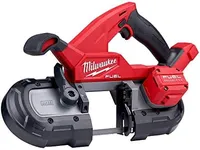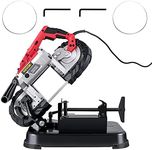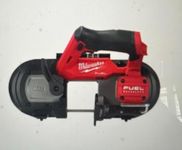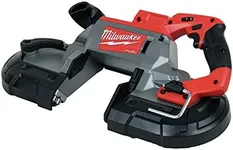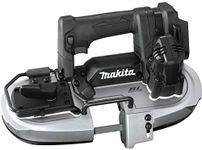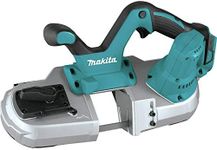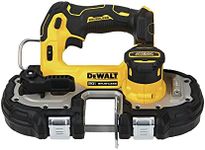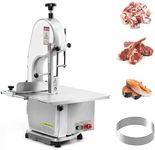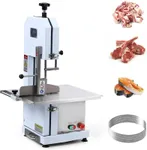Buying Guide for the Best Portable Bandsaws
Choosing the right portable bandsaw can make a significant difference in your cutting tasks, whether you're a professional tradesperson or a DIY enthusiast. Portable bandsaws are versatile tools that can cut through various materials like metal, wood, and plastic. To find the best fit for your needs, it's essential to understand the key specifications and how they impact the tool's performance and usability.Cutting CapacityCutting capacity refers to the maximum size of the material that the bandsaw can cut. This is important because it determines the range of projects you can tackle. Cutting capacities are usually measured in inches and can vary widely. For light-duty tasks, a smaller cutting capacity (around 2-3 inches) may suffice. For more demanding jobs, look for a larger capacity (4-5 inches or more). Consider the typical size of the materials you'll be working with to choose the right cutting capacity for you.
Motor PowerMotor power, measured in amps, indicates the strength and efficiency of the bandsaw. A more powerful motor can handle tougher materials and provide smoother cuts. Light-duty bandsaws may have motors around 5-6 amps, which are suitable for occasional use and softer materials. For heavy-duty use and cutting harder materials, look for motors with 10 amps or more. Think about the types of materials you'll be cutting and how frequently you'll use the tool to determine the appropriate motor power.
Blade SpeedBlade speed, measured in feet per minute (FPM), affects how quickly and smoothly the bandsaw can cut through materials. Variable speed settings are beneficial because they allow you to adjust the speed based on the material you're cutting. Lower speeds (100-200 FPM) are better for harder materials like metal, while higher speeds (300-500 FPM) are suitable for softer materials like wood. If you plan to work with a variety of materials, a bandsaw with adjustable speed settings will offer greater versatility.
Weight and PortabilityThe weight of a portable bandsaw affects its ease of use and transportability. Lighter bandsaws (10-15 pounds) are easier to carry and maneuver, making them ideal for jobs that require frequent movement. Heavier bandsaws (20-25 pounds or more) may offer more stability and power but can be cumbersome to transport. Consider how often you'll need to move the bandsaw and the typical working conditions to choose the right balance between weight and portability.
Durability and Build QualityDurability and build quality are crucial for ensuring the longevity and reliability of your bandsaw. Look for bandsaws made from high-quality materials like steel or aluminum, which can withstand regular use and harsh conditions. Features like rubberized grips and protective guards can also enhance durability and user comfort. If you plan to use the bandsaw frequently or in demanding environments, investing in a well-built, durable model will pay off in the long run.
Ease of Blade ChangeThe ease of changing blades is an important consideration, especially if you need to switch between different types of cuts frequently. Some bandsaws feature tool-free blade change systems, which allow you to replace blades quickly and easily without additional tools. This can save time and reduce frustration during your projects. If you anticipate needing to change blades often, look for a bandsaw with a convenient blade change mechanism.
